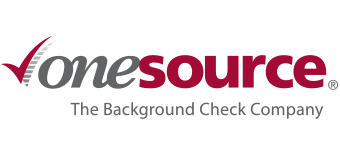Do Expunged Records Show Up on Background Checks?
When running a criminal record check on a potential employee, volunteer or contractor, you want to learn as much about them as possible. The contents of a criminal record can determine what positions an applicant can fill, or if they can secure a position at all. It makes sense that you want the most comprehensive information as you can find. This will of course help you make the best decisions for your organization. However, not all records are public. Under some circumstances, people can have criminal records sealed or expunged. But do expunged records show up on background checks? Expunged charges are erased from the record entirely, and sealed records still exist but are inaccessible to the public.
Generally, sealed and expunged records will not appear on a background check. With the help of One Source, you can still make informed decisions about your applicants without sealed or expunged records. Here, we’ll explain what it means to get a record expunged or sealed. We’ll also discuss why those records won’t show up on a report and how you can maintain ethics while onboarding.
What does it mean to get records expunged or sealed?
After a person is convicted with a crime, they may ask the court to remove that conviction from public record. If the court grants a request to expunge a conviction or arrest, all records of the event are completely erased. If the court decides to seal a record, then the record still exists, but it can only be accessed with a court order.
People try to remove records to get a fresh start after a difficult time or to move past a mistake. Requests to erase or seal a record is reviewed by a court. If passed, the records disappear to reinforce their commitment to starting over. This demonstrates that an outside party believes this person deserves a clean record.
Why don’t erased or sealed records show up in reports?
It is unethical for background check agencies to report on convictions that have been purposefully erased. This is why expunged records don’t show up on background checks. Individuals usually earn the right to get their records cleared, so it’s not fair to report on crimes that the court deemed erasable.
Just because it’s unethical to report on hidden records doesn’t mean it never happens, however. Courts will clear a record in their official system, but that record may still remain in the databases of some consumer reporting agencies. This means an erased record could result in a screening report on accident, which could harm an applicant’s chance of being onboarded.
At One Source, we search real-time criminal records directly from the courts. This means we provide you the most current information on an individual or record. We want to give you the best understanding of who is applying for your organization while respecting the wishes of the court and the applicant. Sifting through criminal records can be tricky and pose ethical issues, but One Source has your back and will help you make the best choices. We can help you put together a screening plan that’s right for your organization—contact our Client Relations team today.
As always, if an applicant identifies information in their report which they believe is inaccurate or incomplete, they have the right to dispute the information on their report. Learn more about the dispute process with One Source here.
